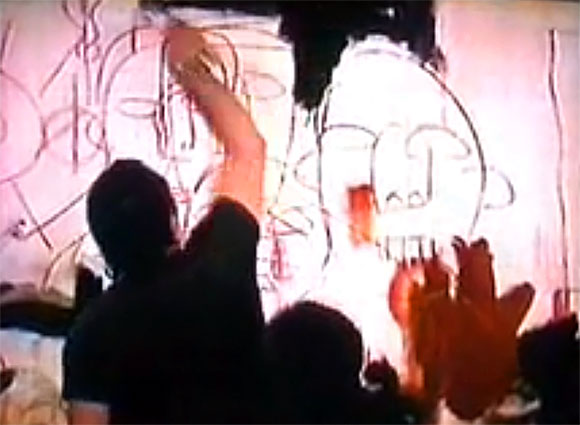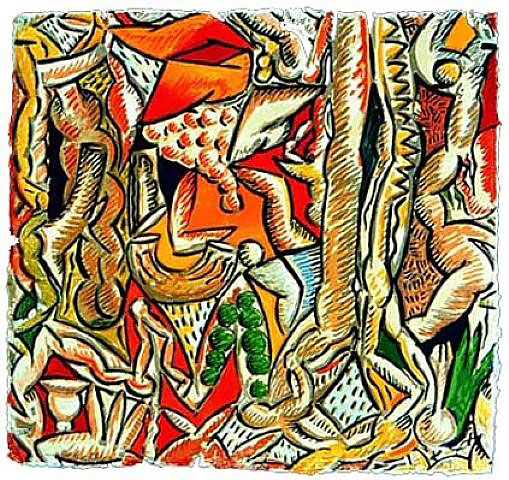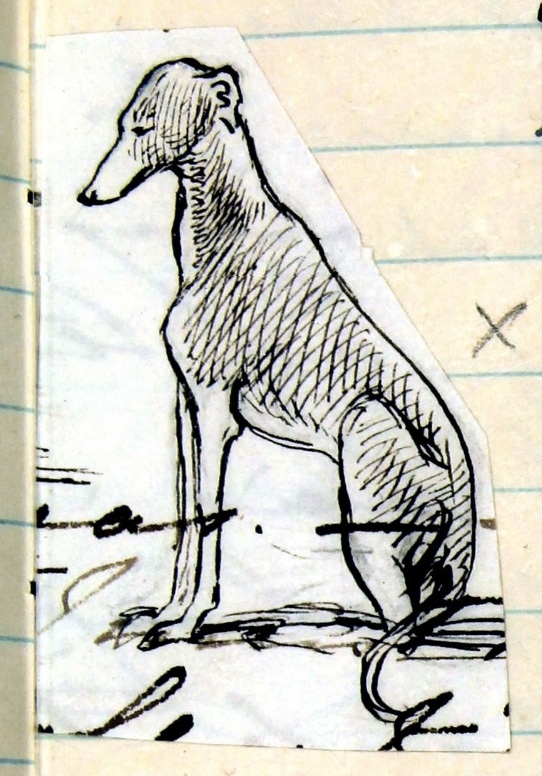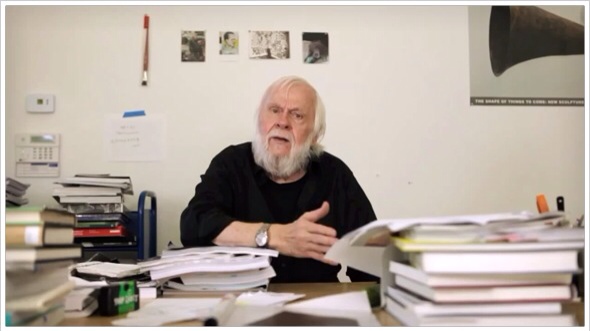Category Archives: Artist
The Drawings of Queen Victoria
A Brief History of John Baldessari: Narrated by Tom Waits
Here is a short humorous biopic about legendary Los Angeles artist John Baldessari. It was directed by Henry Joost and Ariel Schulman as a commission from the Los Angeles County Museum of Art. It’s wonderfully narrated by Mr. Tom Waits who was apparently picked by Baldessari for the job. If I have criticism of Baldessari, it would probably be that he has too much fun making art. Actually I’m not kidding. It’s a harsh criticism from where I stand. But I still like his work. I know his printer in downtown Los Angeles. He lets me stop by now and then to see what’s cooking on his great big old-fashioned printing press. In fact, I am the proud owner of an original signed Baldessari artist’s proof. It makes me smile with confusion whenever I walk past it. Despite Baldessari’s obvious enthusiasm for making conceptual art, there’s a lurking seriousness underneath all those colored dots and old time movie stills. He makes art in the margin between painting and filmmaking.
Maurice Sendak 1928-2012
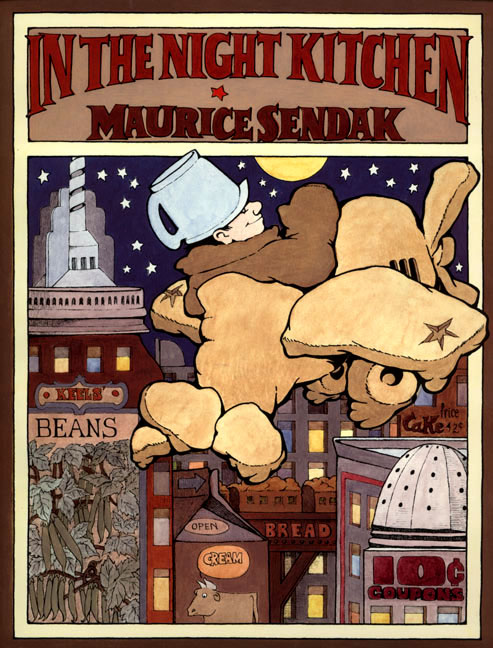 The great children’s book author Maurice Sendak has passed away. He was 83. I always liked the way he used black edges around figures in many of his drawings. His most famous work, ‘Where the Wild Things Are,’ was always my least favorite. I never liked those particular drawings. They seem confused and fuzzy. I always took the most inspiration from his more controversial book, ‘In the Night Kitchen.’ Its drawings seemed to me to have a calm effortless quality. In fact, when I began this site years ago I often referred to Sendak’s work for simple pointers on illustration. His ‘Nutshell Library’ is the one that goes back the farthest into my own childhood memories. Its incredible simplicity and perfect match of words to pictures make it one of the great all time children’s collections.
The great children’s book author Maurice Sendak has passed away. He was 83. I always liked the way he used black edges around figures in many of his drawings. His most famous work, ‘Where the Wild Things Are,’ was always my least favorite. I never liked those particular drawings. They seem confused and fuzzy. I always took the most inspiration from his more controversial book, ‘In the Night Kitchen.’ Its drawings seemed to me to have a calm effortless quality. In fact, when I began this site years ago I often referred to Sendak’s work for simple pointers on illustration. His ‘Nutshell Library’ is the one that goes back the farthest into my own childhood memories. Its incredible simplicity and perfect match of words to pictures make it one of the great all time children’s collections.
Children’s books will suffer for the absence of Mr. Sendak and his incredible genius.
Here’s a relatively recent video with Sendak talking about his work and his admiration for poet William Blake.
Documentary: Los Angeles Meets the Megalith
Artist Michael Heizer’s enormous new work on the grounds of the Los Angeles County Museum of Art required a 340-ton boulder as its centerpiece. The boulder had to be transported over 100 miles from its quarry. At first, I was very interested in this rock. It’s huge! But soon I became more interested in the city’s reaction to the rock. So this film documents the final few miles of the rock’s journey, but it also documents the people who came out to be a part of the great Los Angeles rock transport. The film is part documentary and part personal impression. The simple fact of the matter is that the rock’s arrival is an unusual milestone in the life of this city. You can tell that simply by looking at the faces in my film.
Jean Cocteau – Lies and Truths: 1996 French Documentary
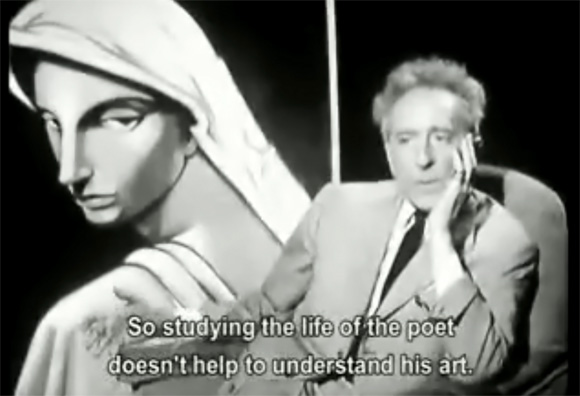
This is a 1996 documentary by Noël Simsolo, featuring many interviews with Jean Cocteau himself, Jean-Luc Godard and actor Jean Marais. The great French director of films like ‘Blood of a Poet,’ ‘Orpheus,’ and ‘Beauty and the Beast,’ was also an essayist, poet, artist, and playwright. When I was a kid I read the book he wrote about filming ‘Beauty and the Beast.’ I understood little of it except that there was the general impression of someone working against constant hardship to attain a mysterious something. The book detailed his struggles with the subtleties of light, weather and performance in the pursuit of a mysterious quality that must be present in the fairytale. I knew that his efforts had worked because I had seen the film on television and understood that it was simply the most convincing fairytale I had ever seen. Another film with this totally mysterious quality is ‘Orpheus,’ which is Cocteau’s modern version of the Greek myth in which the great musician/poet descends into the underworld to bring his wife back to the world of the living. Cocteau’s telling of the tale is at once ancient and modern, always mysterious and always trying to get close to poetry. Whenever I see that film I feel that I am seeing an important picture of French artistic life in the late 1940s told through the prism of ancient Greek myth. The film sits in that fascinating period of artistic ferment and dawning of a new cinematic movement that was a reaction to the end of World War II. Possibilities in films of that period seem limitless. There is a calmness of the image, an almost casual approach to creating scenes. Things are becoming more fluid and less studio-bound. Films are beginning to lean toward poetry and art.
Even though I never really understood what was being said in the ‘Orpheus’ film, it is probably one of the most important influences on the little bits of work that I do in film and video. Various images and scenes from ‘Orpheus’ regularly pop into my head as I work.
One of the best things I think an artist can learn from looking at Jean Cocteau is to follow one’s own interests without worrying about being unqualified – pretending can eventually get you where you want to go if you do it absolutely.
